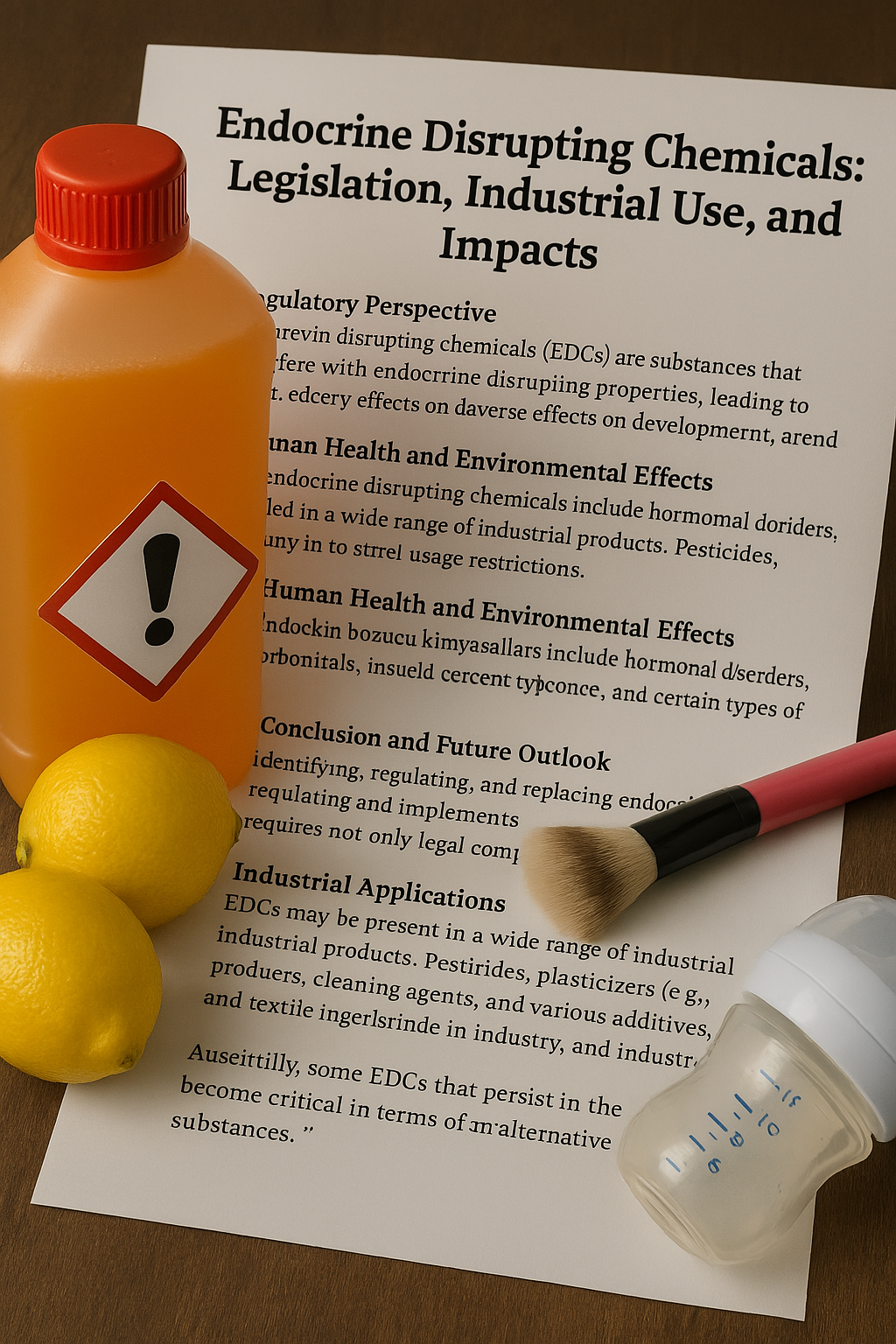Endocrine Disrupting Chemicals: Legislation, Industrial Use, and Impacts
Endocrine disrupting chemicals (EDCs) are substances that interfere with the **hormonal system**, leading to adverse effects on development, reproduction, and immune function in living organisms. These chemicals, which may be of natural or synthetic origin, can disturb hormonal balance even at very low doses. Due to these properties, EDCs are considered a serious risk to **public health** and the **sustainability of ecosystems**.
Regulatory Perspective: The Framework Against EDCs
The European Union’s **REACH (EC 1907/2006)** and **CLP (EC 1272/2008)** regulations cover the classification, labeling, and registration processes for substances with endocrine disrupting properties. In Türkiye, these frameworks are aligned with the national **KKDIK** and **SEA** regulations, ensuring a consistent approach to chemical management. The European Chemicals Agency (ECHA) and the European Food Safety Authority (EFSA) have established joint criteria for identifying EDCs and assess them based on robust scientific data. Substances identified as EDCs are generally included on the "Substances of Very High Concern" (SVHC) list and are subject to strict usage restrictions, playing a vital role in controlling these harmful chemicals.
Industrial Applications: The Hidden Presence of EDCs in Products
EDCs may be present in a wide range of industrial products that we encounter daily. **Pesticides**, **plasticizers** (e.g., **bisphenol A - BPA**), **cosmetic products**, **cleaning agents**, and various additives used in **textile processing** can exhibit endocrine disrupting properties. Their pervasive use in plastic packaging, baby products, and cosmetic formulations has become critical, necessitating rigorous regulatory oversight and the urgent pursuit of alternative, safer substances. Consumer awareness about these products is crucial in reducing exposure.
Human Health and Environmental Effects: A Silent Threat
The health effects of **EDCs** are broad and concerning, including **hormonal disorders**, **infertility**, **early puberty**, **neurological development issues**, and certain types of **cancer** (such as breast, prostate, and thyroid cancers). Exposure during pregnancy can adversely affect fetal development, leading to long-term health problems. On an ecosystem level, these substances may lead to **reproductive problems** in aquatic organisms, declining species populations, and a reduction in **biodiversity**. Additionally, some EDCs that persist in the environment can **bioaccumulate** through the food chain, reaching higher concentrations in top predators, including humans, and posing significant long-term environmental risks.
Conclusion and Future Outlook: Steps Towards a Sustainable Future
Identifying, regulating, and replacing endocrine disrupting chemicals requires not only legal compliance but also significant social responsibility. Key steps include supporting robust **scientific evaluation processes**, promoting **sustainable formulations** in industry, and increasing **consumer awareness**. Moving forward, developing safer chemical alternatives and minimizing EDC exposure are critical for achieving our public health and environmental protection goals. A healthy environment truly means a healthy future for all.
